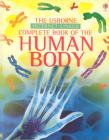



Locating and Referencing Relevant Texts (what?????)
During this Unit of Inquiry, 4S will be learning how to show where they have got their information from. We will start doing this when they are finding information for the "jig-sawing" project in which they are learning about the main body systems. First, they will get in their expert groups and select books, chapters and chunks of text that they believe will help them in their project. They will then write the name of the book, the author, the date of publishing, the publisher and the relevant pages in their Unit of Inquiry books.